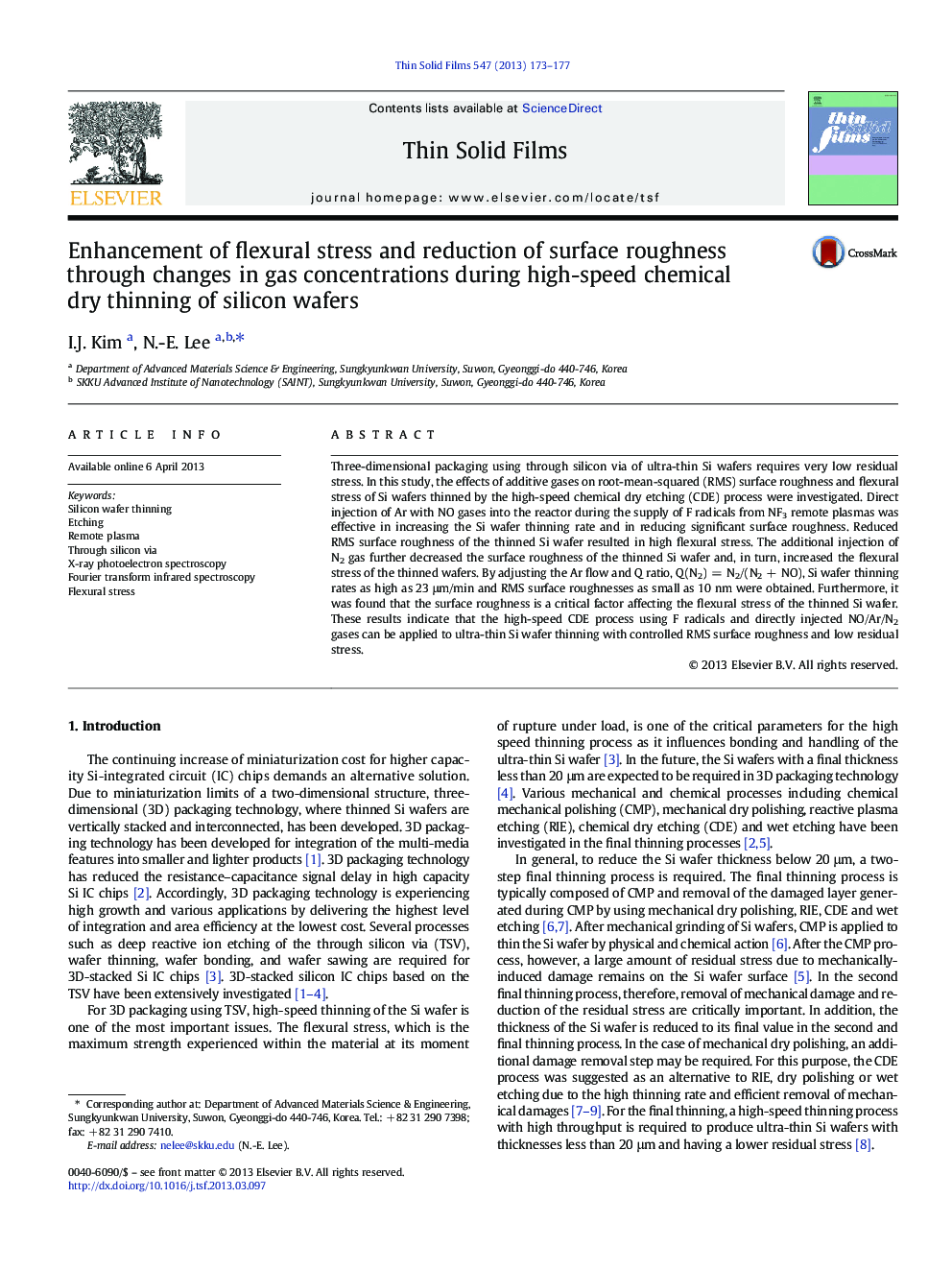| Article ID | Journal | Published Year | Pages | File Type |
|---|---|---|---|---|
| 1665911 | Thin Solid Films | 2013 | 5 Pages |
•Chemical dry etching of Si wafers affected by N2/(N2 + NO) flow ratio.•Increasing the flow ratio decreased the thinning rate and surface temperature.•Si wafer thinning rate as high as 23 mm/ min was obtained.•Root mean square surface roughness value drastically decreased from 91 to 1.21 nm.•The strength value of flexural stress increased from 162 to 756 MPa.
Three-dimensional packaging using through silicon via of ultra-thin Si wafers requires very low residual stress. In this study, the effects of additive gases on root-mean-squared (RMS) surface roughness and flexural stress of Si wafers thinned by the high-speed chemical dry etching (CDE) process were investigated. Direct injection of Ar with NO gases into the reactor during the supply of F radicals from NF3 remote plasmas was effective in increasing the Si wafer thinning rate and in reducing significant surface roughness. Reduced RMS surface roughness of the thinned Si wafer resulted in high flexural stress. The additional injection of N2 gas further decreased the surface roughness of the thinned Si wafer and, in turn, increased the flexural stress of the thinned wafers. By adjusting the Ar flow and Q ratio, Q(N2) = N2/(N2 + NO), Si wafer thinning rates as high as 23 μm/min and RMS surface roughnesses as small as 10 nm were obtained. Furthermore, it was found that the surface roughness is a critical factor affecting the flexural stress of the thinned Si wafer. These results indicate that the high-speed CDE process using F radicals and directly injected NO/Ar/N2 gases can be applied to ultra-thin Si wafer thinning with controlled RMS surface roughness and low residual stress.
